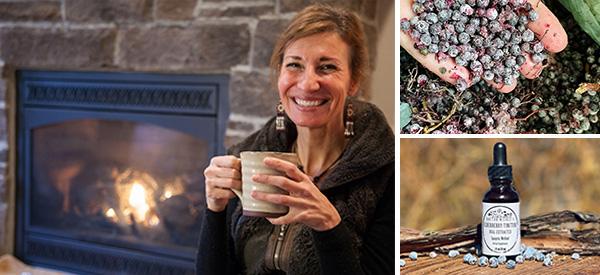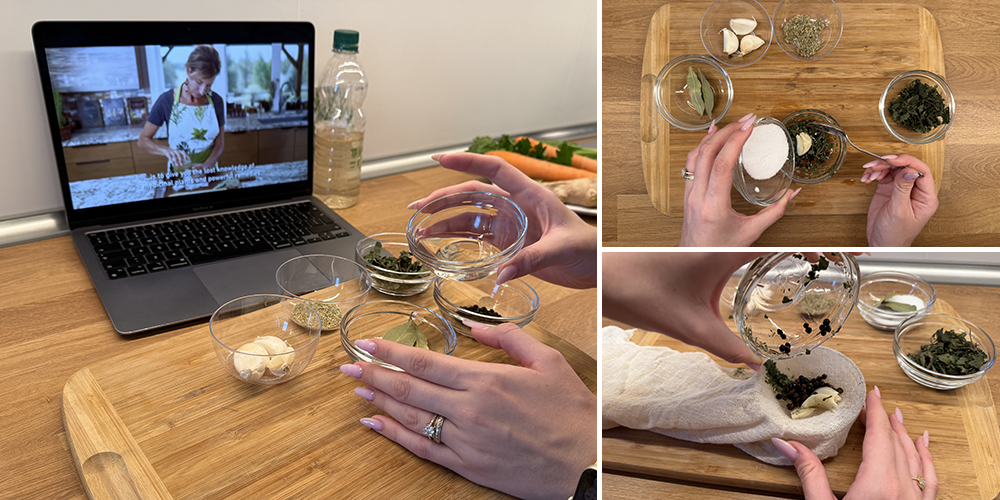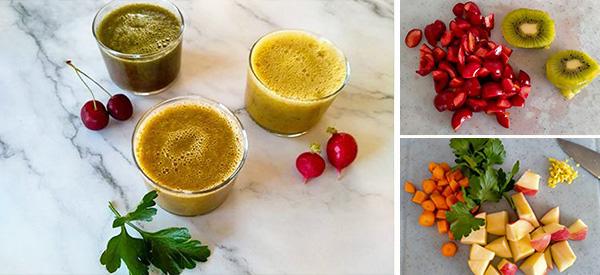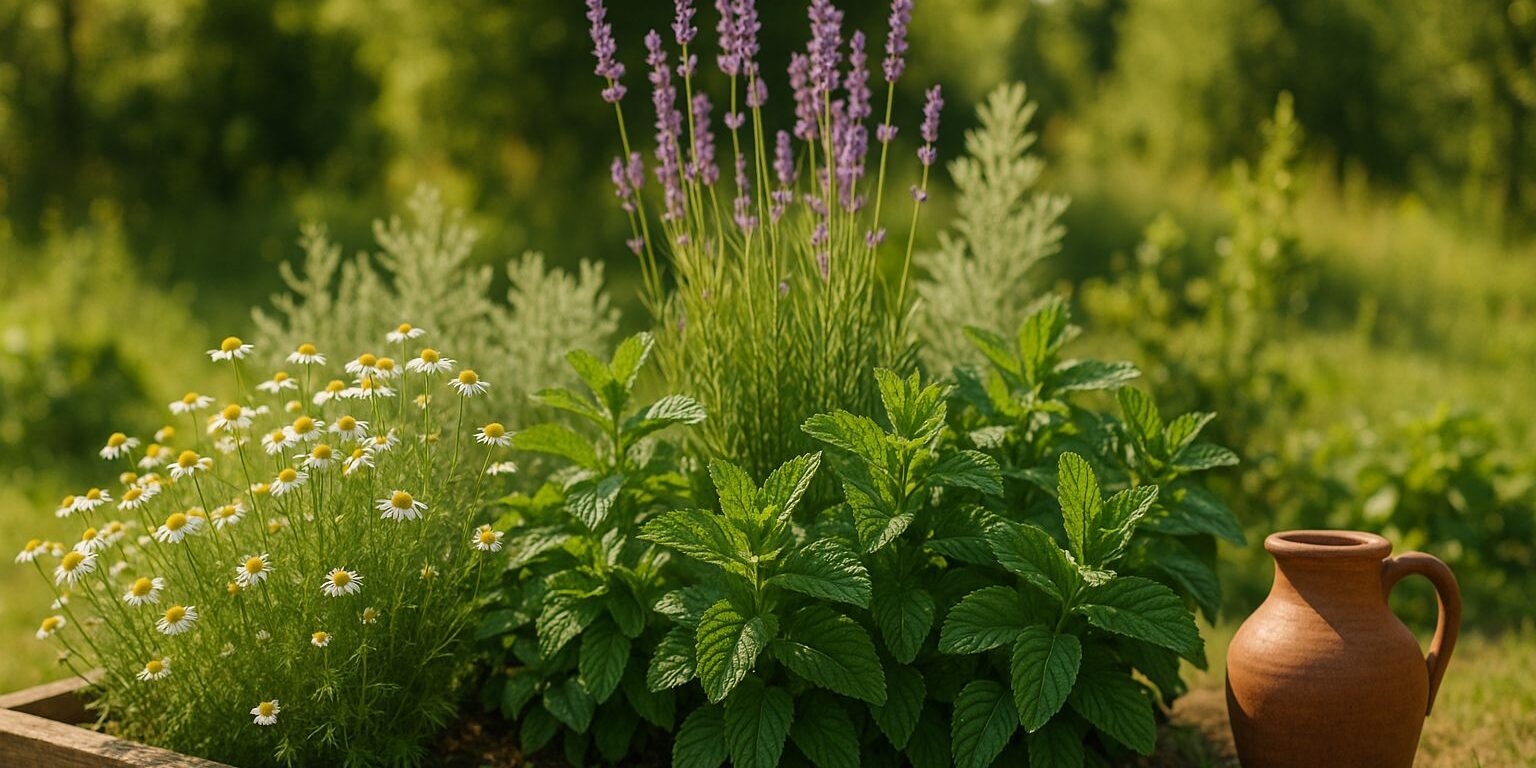
The Beginner’s Guide To Growing Your Own Medicinal Herb Garden
Imagine stepping outside into your own backyard and gathering fresh herbs that have been trusted for centuries to ease discomfort, restore balance, and support everyday wellness. Creating a medicinal herb garden is not only about cultivating plants; it is about reconnecting with the timeless remedies nature has always offered. With a little care and knowledge, you can grow a living apothecary just a few steps from your door.
This guide will help you choose herbs suited to both your needs and your growing conditions, show you how to care for them naturally, and give you confidence in using them for health and nourishment. Whether you wish to ease digestion, calm the nerves, or simply enjoy the sight and scent of thriving greenery, this journey can be both practical and deeply fulfilling.
Growing medicinal herbs also deepens your relationship with the seasons. In spring, you’ll watch tender shoots emerge as a sign of renewal, while in autumn, drying herbs for teas and tinctures helps you prepare for the colder months ahead. The cycle of planting, tending, and harvesting connects you to the rhythms of nature in a way that few modern pursuits can.
In many ways, tending an herb garden is also a form of self-care. The quiet work of watering, pruning, and harvesting becomes meditative, reducing stress and grounding you in the present moment. The rewards go beyond the physical remedies you harvest—the act of gardening itself nurtures emotional and spiritual well-being.
Key Takeaways:
- Choose the right herbs based on your needs and the climate in your area, ensuring they will thrive in your garden conditions.
- Understand the basic requirements for plant care, including sunlight, soil quality, and watering to promote healthy growth.
- Consider starting with easy-to-grow herbs like basil, mint, and chamomile to build confidence and experience.
- Learn about the various uses of each herb for medicinal purposes, enhancing your gardening knowledge and application.
- Utilize organic gardening practices to maintain a safe and chemical-free environment for your medicinal herbs.
The Medicinal Gifts of Herbs
Herbs carry within them compounds that can ease pain, calm the mind, and strengthen the body. Traditional healers knew this long before modern science confirmed it. Their natural oils, alkaloids, and flavonoids act in harmony with our systems, gently guiding the body back to balance. A simple cup of chamomile tea to encourage sleep, or a sprig of peppermint to settle the stomach, shows just how powerful and accessible these plants can be.
The beauty of herbs lies not only in their healing but in their subtlety. Unlike pharmaceuticals, which often act strongly and immediately, herbs usually work gently and consistently over time. They encourage the body’s own healing processes, making them particularly well-suited for maintaining balance and resilience.
Many herbs also nourish in ways we don’t always recognize. Nettle, for instance, is packed with vitamins and minerals, making it a tonic for overall vitality. When used regularly, such herbs build strength from the inside out, reminding us that medicine is not only about treating illness but about fostering long-term wellness.
Wisdom Carried Through the Ages
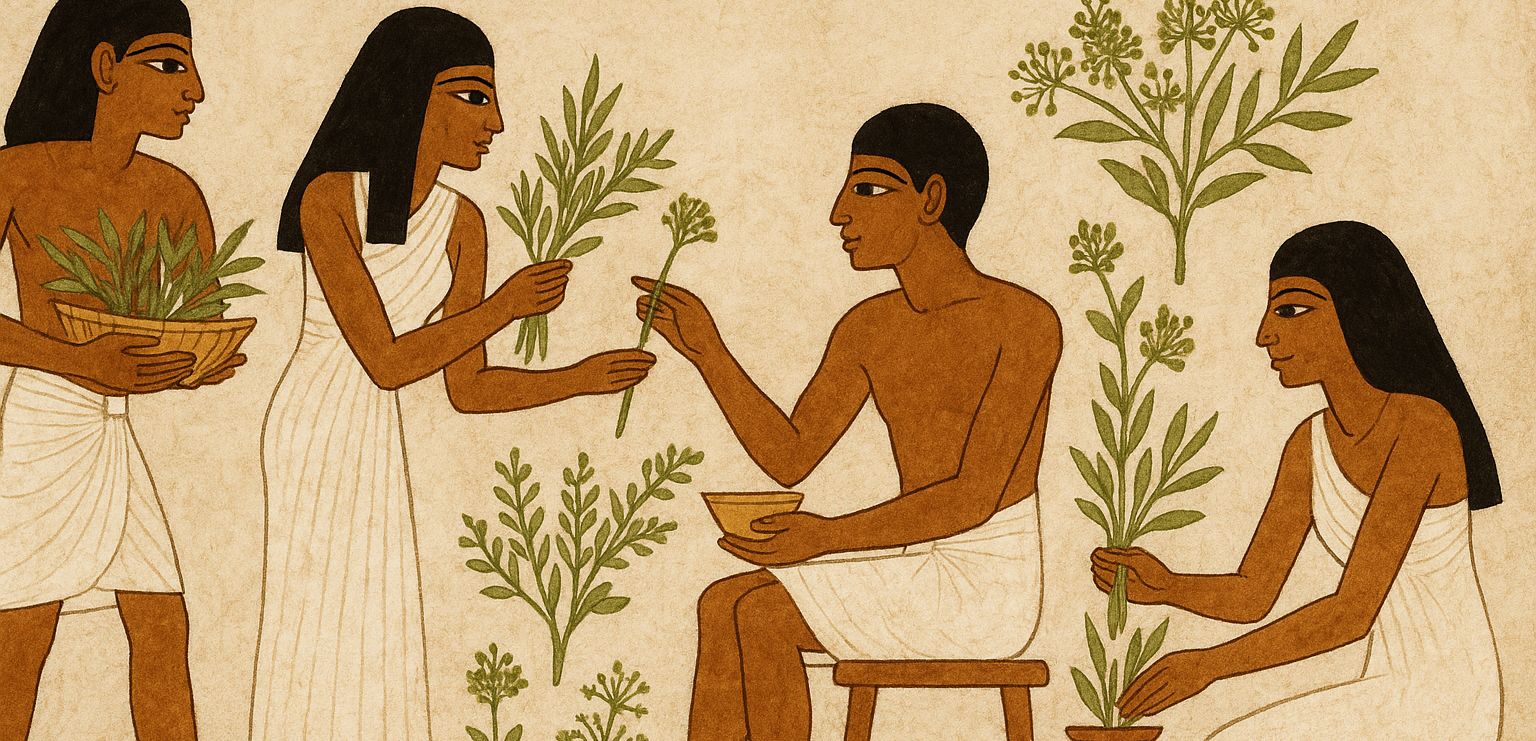
From ancient Egypt to traditional Chinese medicine, herbs have always been central to healing practices. The Ebers Papyrus, written over 3,000 years ago, recorded hundreds of remedies using common plants. These texts remind us that the roots of health have always been found in the soil. When you grow medicinal herbs, you join a lineage of people who understood that healing often begins in the garden.
Indigenous traditions around the world also offer countless examples of plant wisdom passed down through generations. Native peoples in North America, for example, have long used plants like echinacea and willow bark to strengthen immunity and relieve pain. Their practices highlight the intimate knowledge developed through centuries of close observation of the natural world.
This history also serves as a gentle reminder to treat plants with respect. Many cultures considered herbs not only as remedies but as sacred gifts. Approaching your own garden with gratitude—seeing the plants as partners in health—can transform the way you cultivate and use them.
Why Science Still Looks to Plants
Modern research continues to uncover what traditional knowledge already suggested. Compounds like curcumin in turmeric reduce inflammation, while lavender oil can calm anxiety and encourage rest. Garlic has been shown to support heart health, and ginger is well known to ease nausea. By combining ancient wisdom with modern science, we gain both confidence and clarity in choosing herbs that support our well-being.
Today, many of our most effective medicines trace their origins back to plants. Aspirin, for instance, was developed from willow bark, while digitalis—a heart medicine—comes from foxglove. This overlap demonstrates that nature remains one of our greatest teachers, and modern laboratories are only beginning to rediscover what traditional healers have always known.
Science also helps us understand dosage and safety, which are important when working with powerful herbs. While a cup of ginger tea is safe for most people, concentrated extracts can interact with medications. Balancing scientific knowledge with traditional wisdom allows us to use herbs more wisely and responsibly.
Choosing the Right Herbs for You
Every medicinal garden should reflect the gardener’s needs. Ask yourself what you wish to support most: digestion, immunity, stress relief, or simply overall vitality. Then match herbs to those goals. For example, echinacea is a trusted ally during cold season, while lemon balm lifts the mood. Always take into account your climate, soil, and the space available—herbs, like people, thrive best when their environment suits them.
It is often wise to begin with just a few herbs rather than planting too many at once. This allows you to become familiar with their growth habits and medicinal properties without feeling overwhelmed. Over time, you can add more plants as your confidence and knowledge grow.
You might also find it meaningful to grow herbs that have a personal connection—plants your grandparents used, or those common in your cultural traditions. These choices not only strengthen your garden but also create a sense of continuity between your health, your family, and your heritage.
Ten Reliable Herbs to Begin With
For those just starting, here are ten herbs that are both easy to grow and deeply useful:
Each has unique benefits and can easily be incorporated into your wellness routine.
You may notice that many of these herbs also carry a pleasant fragrance or vibrant color, making your garden as beautiful as it is functional. Calendula’s bright blossoms, for example, attract pollinators while also healing the skin, and lavender’s purple spikes bring both visual charm and calming medicine.
As you grow more comfortable, you can begin experimenting with blending herbs to create your own teas and remedies. A mix of lemon balm and chamomile, for instance, makes a gentle evening tea, while ginger and peppermint together can be soothing after a heavy meal.
Blending Kitchen and Healing Traditions
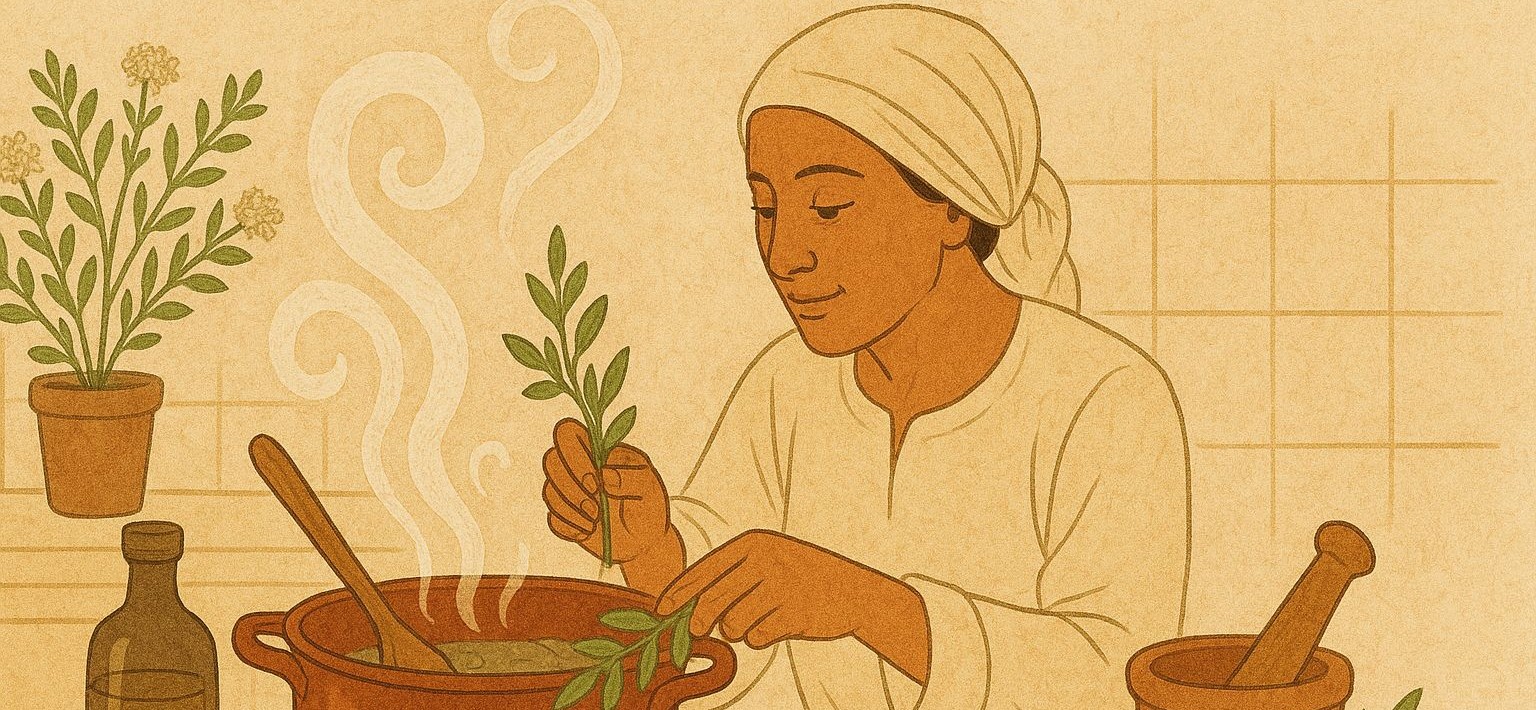 Many herbs straddle the line between food and medicine. Basil, sage, oregano, and thyme not only enrich your meals but also bring antimicrobial and antioxidant benefits. This marriage of flavor and healing makes your kitchen an extension of your medicine cabinet. A handful of fresh herbs stirred into soup or tea can nurture both body and spirit.
Many herbs straddle the line between food and medicine. Basil, sage, oregano, and thyme not only enrich your meals but also bring antimicrobial and antioxidant benefits. This marriage of flavor and healing makes your kitchen an extension of your medicine cabinet. A handful of fresh herbs stirred into soup or tea can nurture both body and spirit.
Cooking with herbs also ensures you use them consistently, which is often key to unlocking their benefits. A sprinkle of thyme in a stew or a sprig of rosemary roasted with vegetables becomes part of your daily nourishment, weaving healing into the rhythm of your meals.
This dual role also reduces waste. Any excess harvest can find its way into the kitchen, whether as seasoning, herbal vinegar, or infused oil. In this way, nothing is lost, and every part of the plant can contribute to both health and enjoyment.
Preparing the Ground
A thriving garden begins with healthy soil. Clear weeds and stones, loosen the earth, and enrich it with compost. Herbs prefer soil that drains well but still holds enough moisture to nourish roots. Most will ask for 6–8 hours of sunlight daily. Attend to these basics and your plants will reward you with both beauty and medicine.
If space is limited, containers and raised beds can be just as effective. In fact, pots allow you to adjust placement for sunlight and bring delicate herbs indoors during colder months. This flexibility makes container gardening a wonderful option for beginners.
Adding mulch around your herbs not only conserves moisture but also discourages weeds and regulates soil temperature. Over time, these small practices create a healthier environment that supports strong, resilient plants.
Caring for Your Plants
Water deeply but not too often, encouraging strong roots. Feed them with compost or gentle organic fertilizers, and prune regularly to encourage new growth. Stay attentive to signs of pests or disease. A sudden yellowing leaf, sticky residue, or stunted growth tells you something is amiss. Neem oil, companion planting, and a healthy ecosystem often keep troubles at bay without resorting to chemicals.
Regular observation is one of the most powerful tools you have. Simply walking through your garden each day, touching the soil, and noticing changes helps you catch problems early. This practice also deepens your connection with the plants, teaching you to read their subtle signals.
Companion planting is another gentle strategy to keep your garden balanced. For instance, growing basil near tomatoes not only improves flavor but also deters certain pests. These natural partnerships remind us that diversity strengthens health in gardens just as it does in ecosystems.
Harvesting and Using Your Herbs
The best time to gather herbs is in the cool of the morning, just after the dew has lifted. This preserves the oils that carry their healing qualities. Harvest leaves before flowering, when potency is highest. Use your herbs fresh in teas, tinctures, and meals, or dry them carefully for later use. Infused oils, salves, and even homemade powders can extend their usefulness year-round.
Drying herbs can be as simple as tying small bundles and hanging them in a cool, airy place. Stored in glass jars away from light, they can retain their potency for many months. This way, your garden continues to nourish you even in the depths of winter.
Experimenting with preparation methods—such as tinctures, syrups, or salves—brings versatility to your herbal toolkit. These forms concentrate the active compounds in different ways, giving you more options to match your remedies with your needs.
A Closing Reflection
Growing your own medicinal herb garden is not only a way to care for your health, but also a way to deepen your connection with the rhythms of nature. With each seed you sow and each harvest you take, you participate in a tradition that stretches back thousands of years. Begin simply, tend your garden with patience, and let these plants remind you that healing often comes from the ground beneath your feet.
Your garden can become a sanctuary, a place where you retreat not only for remedies but also for peace. The scents of lavender, rosemary, or mint on a warm day can soothe the mind as much as they heal the body. Over time, your garden becomes a trusted companion on the path to wellness.
Remember, even small beginnings can bear great fruit. A single pot of basil or a patch of chamomile can introduce you to the joys of herbal medicine. As your confidence grows, so too will your garden, each season adding new plants and new lessons to your journey.
Frequently Asked Questions
Q: What are the first steps to starting a medicinal herb garden?
A: Begin with a thoughtful look at your space. Choose a sunny spot with at least 6–8 hours of light each day and soil that drains well. Enrich the earth with compost to create a fertile base. From there, select a few beginner-friendly herbs such as chamomile, peppermint, or lavender. Plant seeds or young starts, giving them the space they need to grow, and keep a steady watering routine. With patience and care, your garden will gradually become a living source of medicine.
Q: How do I choose the right herbs for my needs?
A: The best choice comes from asking what your body and household need most. For digestion, peppermint and ginger are excellent companions. For calming the nerves or supporting restful sleep, lemon balm and chamomile are time-tested. Always consider your climate as well; a plant that thrives in your local conditions will require far less effort to grow. Visiting a nearby nursery or observing what herbs are already used in your region can also guide your decision.
Q: What type of soil is ideal for medicinal herbs?
A: Most herbs prefer soil that is rich in organic matter yet drains easily. A pH between 6.0 and 7.0 works well for the majority of medicinal plants. If your soil is heavy with clay, amend it with sand and compost to encourage better drainage. Raised beds can also be a wonderful solution. A soil test will give you a clear picture of nutrient levels and help you make adjustments before planting.
Q: How can I keep my herb garden healthy through the season?
A: Regular care makes the difference. Water when the soil feels dry to the touch, but avoid letting roots sit in soggy conditions. Keep weeds under control so your herbs do not compete for nutrients. Light pruning encourages bushier, healthier plants. Keep an eye out for pests and address them early with natural methods such as neem oil or companion planting. Feeding your herbs with compost or gentle organic fertilizers will also help them thrive throughout the growing season.
Q: Are medicinal herbs always safe to use?
A: Herbs are powerful allies, but they should be approached with both respect and knowledge. Some plants may interact with prescription medicines or may not be suitable during pregnancy or for certain health conditions. Always learn about each herb you intend to use, and when in doubt, consult a trusted healthcare professional. Pay attention to how your body responds, as herbal medicine works best when it is personal and mindful.
You May Also Like:
 Breathe Easy: How Mullein Can Help Your Lungs
Breathe Easy: How Mullein Can Help Your Lungs
Discover The Most Effective Natural Antibiotic Growing In Your Backyard (Video)






